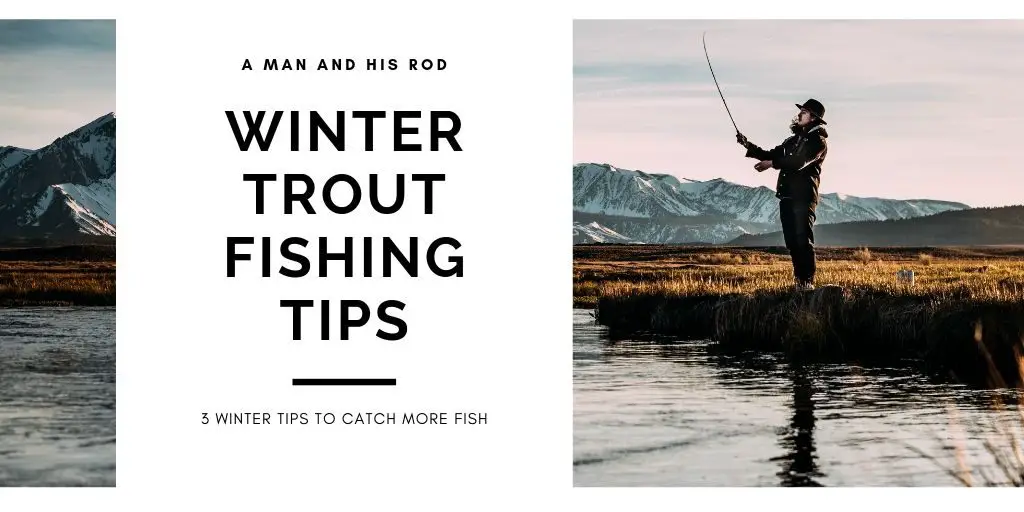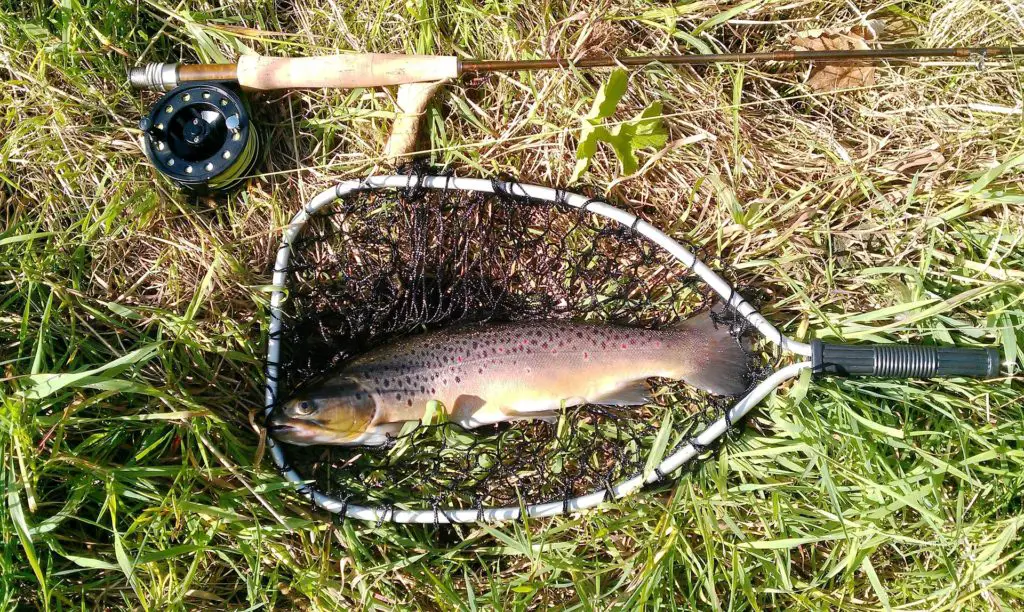
The sport of fly fishing, like most hobbies, can look very easy to the outside observer. Once you begin getting en-grained into the sport though, you’ll find there is a lot more below the surface. If you’re looking to get into the sport and are not sure how then check out below where we’ll talk about steps to fly fishing for beginners and skilled anglers alike.
This website is reader supported. Any purchases you make through links on this site earn us a commission at no additional cost to you. Thank you for your support!
Intro to Fly Fishing for Beginners
If you’ve ever turned on your TV in the morning and aimlessly scrolled through the channels while drinking your morning coffee, there’s a good chance you’ve come across a fishing show. You probably saw a man standing in the middle of a river or lake fishing for trout, dressed in all khaki wearing a wide brimmed hat and waving a stick above his head. Fear not, you don’t have to dress like the khaki monster to fly fish.
Fly fishing is not as simple as it seems.
There are different ways to cast, certain flies that only work during certain of the year, on certain days, of certain hours, to even certain minutes.
However, it should be noted that many anglers make it way more complicated than it needs to be. If you’re ever feeling overwhelmed by too much information it helps to think of it this. Fish are hungry, give them something to eat.
Below we’re going to cover a few basics that you should know and will help you in your quest to “feed the fish”.
We’re going to cover casting, setting up your fly rod, different fly fishing knots, as well a quick overview on the selection of your fishing flies.
How to Fly Fish: Basic Concepts and Gear Used
The first step to fly fishing for beginners is to go out and get you a fly rod combo. These can be found online for pretty cheap, and some fly shops will carry them as well.
There’s no sense in going all out and purchasing a $500 set up. Pick out something that is already strung up and maybe even comes with a few flies.
After you’ve gotten your fishing rod you’ll need to practice, practice, practice.
Find a park near your house, stand in your backyard, or even go ahead and drive to the nearest body of water you can find. Tie a piece of yarn onto your line and work through the progressions of casting.
The yarn will simulate the size of a fly but since there is no hook you won’t have the fear of pricking yourself. Below we will have an in depth look at how to cast.
Once the sun has set and there is no more light for casting its time to hop on google and check out the nearest bodies of water to you.
From here you’ll do research on what kind of fish live there. This is a crucial step because it will determine what type of flies, you’ll need to bring with you.
Bass are big fans of streamers, poppers, and crawdads. Where trout prefer dry flies and nymphs.
Once you break into the world of fishing gear there is no turning back.
Many anglers get lost and feel they need every piece of equipment in order to be successful. Really though, there are only a few must have items.
- Hemostats
- Net
- Flies
- Floatant
The hemostats are needed to cut line and retrieve hooks that may be deep in a fish’s mouth.
The net could be argued that its not a must have but it makes handling the fish easier.
Strike indicators are needed when you throw nymphs and your floatant is necessary for dry flies.
Fly Rod Set Up
The classic American fly rod is a 9’ 5wt. This will catch you just about any freshwater fish and is a great starting point for most anglers.
From here you’ll need to also buy a reel that is compatible with the 5wt rod.
On top of this you’ll also need backing for the reel, fly line, leader, and tippet.
Learn more about fly line here.
When you purchase your fly line the size will need to correspond with the size of your reel. Typically, you can go one size larger or smaller if you need to.
Any more could offset the balance of your rig and will result in improper casting.
Fly Fishing Knots
There are three knots you need when fly fishing for beginners. The following knots are absolutely needed before hitting the water.
- Clinch Knot
- Arbor Knot
- Nail Knot
The Clinch Knot will be used primarily to attach your tippet the eyelets of your flies.
This a strong and easy knot that you’ll use when out on the water.
- Feed the line through the eye of the hook
- Pull back the line and make them parallel
- Pinch the two lines with your thumb and index finger
- Twist the two lines together seven times
- Feed the tag end back through the of the line behind the eye of the hook
- Moisten and pull the knot tight
- Trim off excess line
The Nail Knot will be used to join your fly line to your leader.
- Lay a nail or hollow tube against the fly line.
- Set the butt section of the leader against the line and the tube
- Make 6-8 close wraps working left to right, back around the leader, line and tube.
- Pass the tag end through the tube and remove the tube
- Pull the tag end tight on the coils
The Arbor Knot is used to tie your fishing line to your reel.
- Wrap your line around the arbor of the spool
- Tie an overhand knot around the starting point by using the tag end
- Tie a second overhand knot in the tag end
- Pull the standing part of the line to slide the first overhand knot down onto the spool and the second overhand knot to jam against the first and close the knot.

Loop Knots for Fly Fishing
A loop knot can be used for a few different items. You can attach lines to each other and you can also use a loop knot to attach line to the eyes of hooks.

Normally you would want a tight knot connection the eye of the hook but that extra loop can give moving fly’s such as streamers a little bit more action in the water.
Homer Rhode Loop Knot
- Tie an overhand knot toward the end of the leader
- Pass the tag end through the eye of the hook and then run the tag back through the loop that was created by the overhand knot.
- Enter on the same side of the loop as the tag exits the knot.
- Pull the knot tight onto the standing line
Perfection Loop
- From a loop at the end of the line by passing the tag end behind the sanding line
- From a loop at the end of the line by passing the tag end behind the sanding line
- Hold in place and take one more turn, but this time crossing on the topside of the new loop
- Hold the tag end in place and pass the second loop through the first loop.
- Pull the second loop until the knots is tight
How to Cast a Fly Rod
Once you get further into the sport, you’ll figure out there are many different ways to cast a fly rod. Some of them easier than others. But with this article we’re going to tell you how to fly cast the standard way.
Start with your feet shoulder width apart, the grasp the rod with your thumb on top of the grip.
Ensure you keep a nice comfortable grip on the rod. Not too tight, not too loose. Next pull out around 10 feet of line.
Then bring the rod up so that the tip is in the 1 o’clock position.
Pause a second and allow the line unroll in the air behind you.

When the line unravels behind you, you’ll want to smoothly bring the rod tip forward to 11 o’clock.
Keep your wrist straight and your elbow close to your body. As the line unravels in front of you go ahead and smoothly bring the rod tip to parallel with the ground.
The line should end exactly where you aimed the rod.
Final Thoughts
Fly fishing for beginners might seem a little daunting at first but mastering the basics will allow you take catch fish consistently.
Practice your casting, knot tying, and always have the essential gear with you. This will increase your chances of walking away with a full creel.


